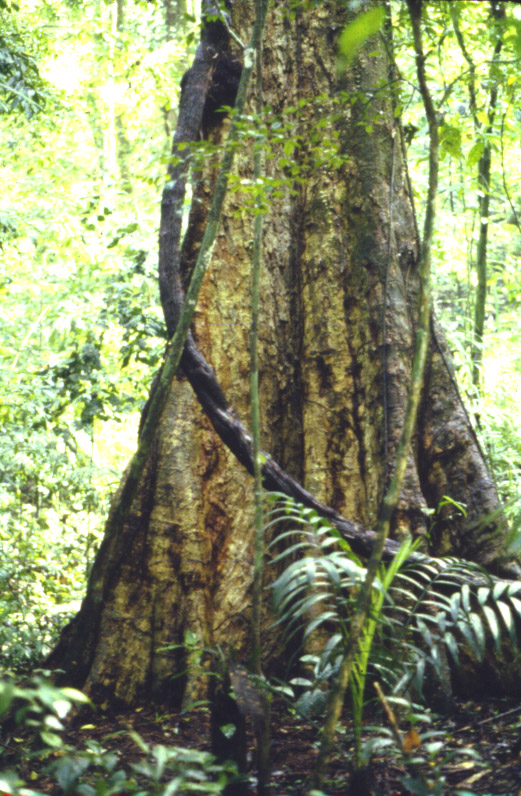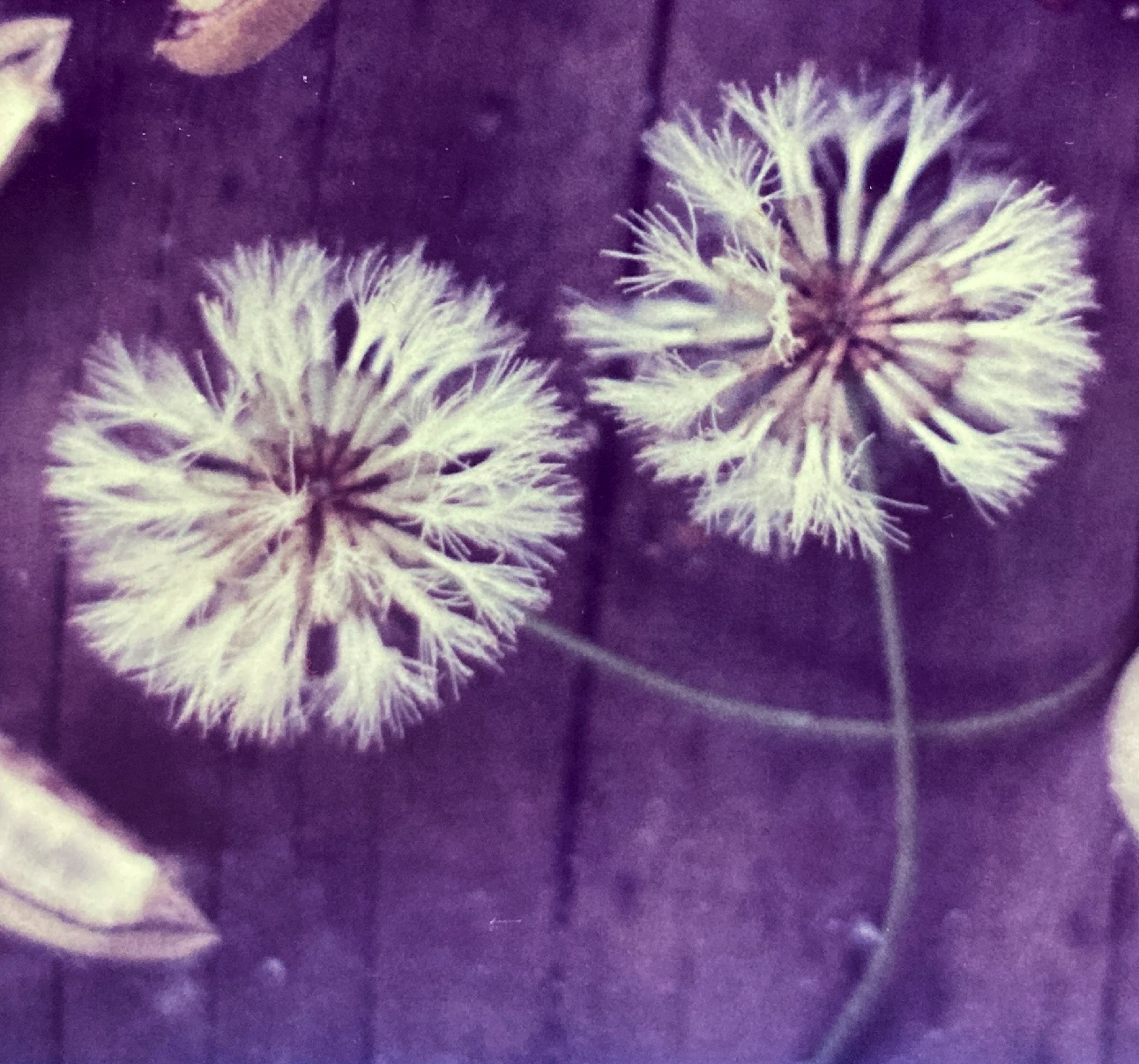Cojoba arborea (L.) Britton & Rose
Mimosaceae ARDILLA
Uncommon emergent evergreen tree (25-35 m) of massive proportions. Ardilla can be found growing on well-drained slopes but appears to prefer the saturated soils of flat bottomlands and streamsides. Remarkable for its finely textured, dense, and extremely large crown, this species also generates hallmark seed pods of a bright pink-orange color.
Description: Ardilla’s trunk characteristics vary greatly according to the age and size of the individual. Younger specimens, with diameters less than a 80 centimeters, generally have straight, cylindrical trunks with smooth, light colored bark. Large, prominent point lenticels, elevated and with a rust or reddish color, often begin to mark and shade the basal portion of the trunk as it becomes larger. Mature trees are truly massive, with diameters often much greater than one meter, and with high, slowly sloping buttresses adding to basal girth. Such large trunks, while still straight, lose any semblance of circular cross-sections and become quite irregular. They are then clad in creme-colored, mostly smooth, exfoliating bark. Branching is evident along the upper half of the bole, where massive, horizontal, and beam-like limbs do justice to the superlative nature of this tree. Ardilla branches subdivide into a multitude of thin twigs that form an extended and hemispherical crown. Cloaked in a thick layer of finely textured foliage, the canopy has an appealingly soft, feathery, and wispy aspect.
Leaves (30 by 20 cm) are bipinnately compound and alternate. Each leaf is made up of 15 pairs of leaflets, oppositely arranged along the petiole and with circular glands located between the pairs (on the petiole). Leaflets are further subdivided into about 30 pairs of small blades, measuring 8 mm long by 2 mm wide. Remaining thick until late in the wet season, Ardilla’s foliage cover enters a period of slow senescence in September. One by one, the tiny leaflet blades yellow and are shed. By December, this process has exacted a toll on the crown and it appears worn and thin. All remaining leaves and petioles are then dropped in January and a rapid regeneration of foliage ensues. Even before February, the new leaf cover is fresh, green, thick, and fully extended. This leaf change marks the beginning of Ardilla’s annual fertility cycle: a sequence of events that, in its precise timing and synchronization, is remarkable and largely unrivaled by other Manuel Antonio trees.
Flower buds appear shortly after the new foliage has expanded, with blossoming largely confined to February – though secondary events may occur in March. Flowers are produced on long-stalked (13 cm), axillar, globular heads (3.5 cm). Numbering 30 to 40 per densely packed head, the blossoms are white and narrow. Each consists of a small, brown, tubular calyx; a five-pointed tubular corolla; and a cluster of long, filamentous stamens – the latter representing the flower’s most conspicuous and eye-catching feature. Lying close to the twigs, within the network of light-green leaves, these fuzzy flowers are striking in their delicate, bubble-like aspect.
Fruits grow rapidly from the old flower heads, maturing as bright orange, fleshy, and multi-sectioned pods (30 cm long by 1.5 cm thick). About 16 rubbery, football-shaped black seeds (2 cm) are exposed when the pods dehisce along longitudinal seams. Curled and revealing a creme-white interior, the open pods allow the satiny seeds to dangle from them by short, thin threads. Harvests, occurring during April and May, are variable in their intensity, with most years typified by low productivity. Germination commences soon after fruit fall, though seed viability appears to be quite low for this species.
Similar Species: Thanks to its immense stature, bipinnate leaf arrangement and tiny leaflet size, Ardilla is easy to identify. The Guanacaste tree (Enterolobium cyclocarpum) is equally massive and also sports bipinnate leaves. However, Guanacaste petioles completely lack glands and its bark is gray with long, vertical, rust-colored lenticels. Iguano (Dilodendron costaricense) also has bipinnate leaves but these are composed of somewhat larger leaflets with serrate margins.
Natural History: Ardillo flowers are pollinated by bees and other insects. Its seed dispersal mechanisms remain somewhat more enigmatic. There appears to be nothing edible in the fruit – the pod is fibrous and the seeds lack arils. It is possible that the bright orange pod serves as a deceptive decoy, capable of luring hungry birds and mammals that associate iridescent color with sources of food. If such animals are occasionally fooled into capturing the pod and transporting it some distance before discarding it, dispersal would be accomplished. By mimicking the colors and shapes used by fruits offering real food, Ardillo may succeed in propagating its progeny while avoiding the energy investment food sources require.
Uses: According to Holdridge and Poveda (1975), the wood is reddish, of good quality, and nicely grained. They also note that trees two meters in diameter are found in the Osa Peninsula – as they are in Manuel Antonio. Ardilla is widely planted as an ornamental and as a shade tree around the parks and streets of the Central Valley.
Distribution: Ardilla can be found growing on well-drained slopes but appears to prefer the saturated soils of flat bottomlands and streamsides. It ranges from Mexico to Ecuador and is in the Antilles.



